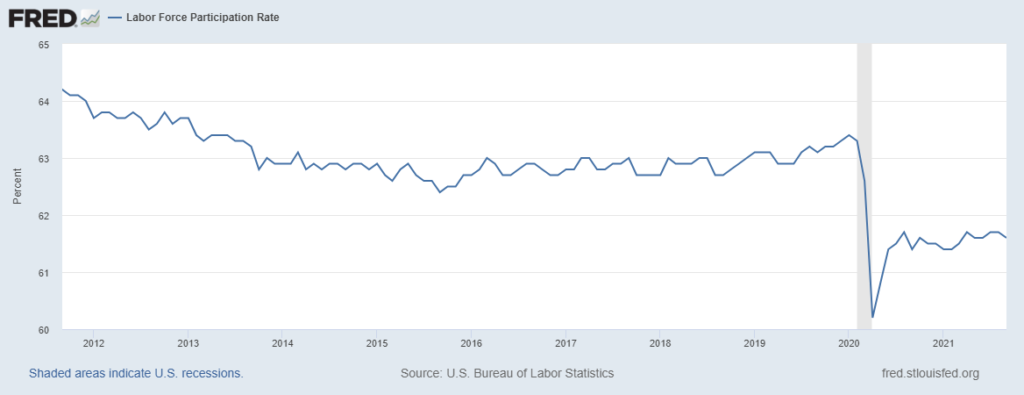While thinking about the labor shortage, a saying attributed to Mark Twain crossed my mind:
There are three kinds of lies: lies, damned lies, and statistics.
The expression actually predates Twain and has been tied to a plethora of historical figures from around the same time period, including economist Walter Bagehot and former British Prime Minister Benjamin Disraeli.
No one knows who said it first. But whoever it was, they were a genius.
At any rate, against my better judgment, I’m going to delve into the statistics to see if I can make heads or tails of the labor shortage.
I’ve heard a wide range of explanations for the abundance of help wanted signs:
- Workers are too scared of COVID-19 to leave their houses.
- The economy is overheating due to Fed stimulus.
- High unemployment benefits incentivizing people to stop looking for work.
- Moms unable to find childcare.
- Boomers taking early retirement.
- Young people opting to quit the rat race before they start it…
I suppose any or all of these could be a partial explanation. But what do the numbers say?
What Statistics Say About the Labor Shortage
Let’s start with the labor force participation rate. This includes every American currently working and looking for work. (If you are unemployed, you are looking for work and thus participating in the workforce … you’re just not having much success at it.)
Labor Force Participation Rate Isn’t Recovering

Source: Federal Reserve.
Here, the numbers don’t lie, despite any claims by Twain or his contemporaries. Labor force participation dipped in the pandemic and hasn’t recovered. Just before COVID-19 blew up the world, 63.3% of Americans aged 15-64 were participating in the labor force. Today, that number is 61.6%.
A difference of 1.7% might not sound like much. But that’s 1.7% of 205 million people, or about 3.5 million people that have simply dropped out.
But who are these people?
They’re not lazy teenagers in need of a haircut and real job. The percentage of 16 to19 year olds in the workforce was 36.2% pre-pandemic, and it’s slightly higher today at 36.3%. It seems that rising wages motivated a small sliver of America’s youth to get off the couch!
They’re also not moms struggling to find childcare. Labor force participation among women is down about 1.9%, not materially different than the general population.
What about Boomers deciding to hang up their cleats? Labor force participation among Americans 55 and older dropped 1.7%, from 40.3% to 38.6%, in line with the general population.
Of course, you can be “in the workforce” and not have a job. America has been a country of entrepreneurs since the very beginning, and we’ve all heard anecdotal stories of people quitting their jobs to take that leap. After living for nearly two years with the threat of a deadly virus, starting a business suddenly seems a lot less scary.
This is harder to prove in the data, as many small businesses are informal. But we can see it.
Before the pandemic, Americans were filing the paperwork for new business tax IDs at a rate of about 280,000 per month. That number has spiked to between 400,000 and 500,000 per month. And again, these are only the businesses formal enough to get their own tax ID. We have no way of measuring how many side hustles have been started since mid-2020.
A Wave of New Small Businesses

Source: Federal Reserve.
Many of these businesses will fail, and the would-be entrepreneurs will likely go back to being paycheck employers and employees. (And let me be the first to say there is no shame in being a failed entrepreneur. The only shame is in lacking the chutzpah to get out there and try.)
So new workers will trickle back into the workforce in the years ahead. Higher wages might also convince teenagers, stay-at-home moms, and would-be retirees to work in greater numbers.
And naturally, a recession will cool off demand for labor in the short term, and cheap automation will replace it in the longer term. So, one way or another, this problem will get fixed.
But it’s not likely to happen overnight. So don’t be surprised if those help wanted signs stay posted a while longer.
To safe profits,
Charles Sizemore
Co-Editor, Green Zone Fortunes
Charles Sizemore is the co-editor of Green Zone Fortunes and specializes in income and retirement topics. He is also a frequent guest on CNBC, Bloomberg and Fox Business.






